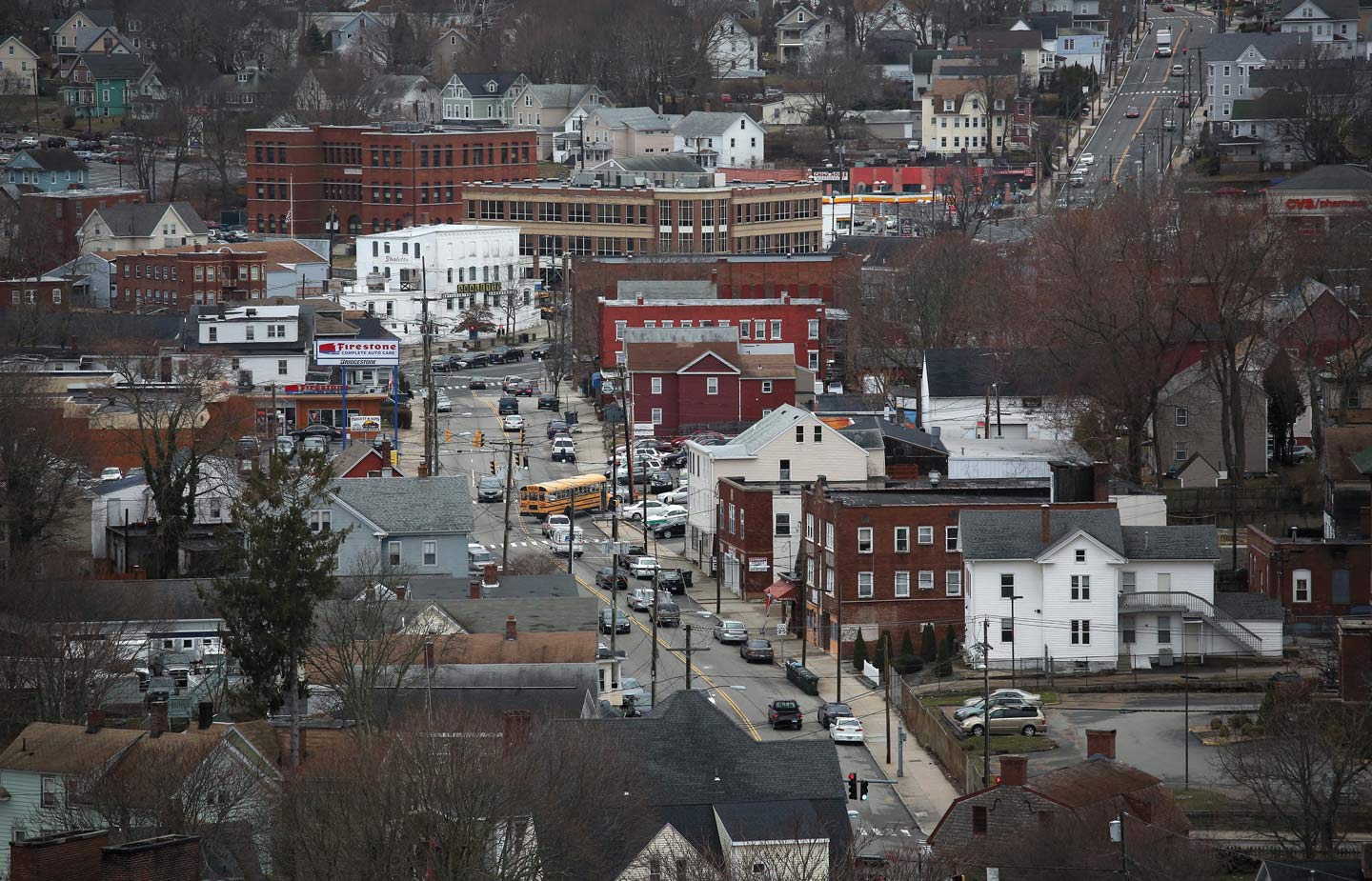The Thin Red Line
Conn explores reparations for people of color living in the New London community, thanks to a Mellon grant.
When Spencer Lancaster, a World War II Army veteran, bought a house in New London in 1972, the neighbors circulated a petition to keep him out. Lonnie Braxton II, a Navy veteran who tried to buy a house in New London around the same time, watched as banks approved mortgages for his friends at Electric Boat while his application languished. And the summer after Donetta Hodge bought her home in Waterford in 1976, she woke up one morning to find white plastic cutlery planted all over her front yard.
These are some of the stories older residents of color are sharing with local high school students interviewing them about their life histories. The three-year project is part of a $275,000 grant that Connecticut College received through the Andrew W. Mellon Foundation’s Just Futures Initiative, which is aimed at addressing the legacy of racism in communities across the United States.
“If we really want to understand the legacy of racism in New London, we need to understand how neighborhoods and housing have been affected historically,” said Nakia Hamlett, the William Meredith Assistant Professor of Psychology at Conn.
Hamlett and Faulk Foundation Professor of Psychology Jefferson Singer are the principal investigators on the project, which will focus on housing discrimination in and around New London.
The narratives pulled from the students’ interviews will be collected and analyzed by Hamlett and Singer with the help of Conn students. These analyses will be shared with their community partners with the goal of disseminating the findings to the larger New London community in a variety of public venues and formats.
“From its inception, we thought of this as a community project,” explained Hamlett. “This drives our focus, because we want something that will have tangible action steps.”
Hamlett said they decided to focus on housing at the suggestion of their community partners: Antonio Vargas Jr., associate pastor of the Church of the City of New London; Jerry Fischer, retired executive director of the Jewish Federation of Eastern Connecticut; and Nicole Broadus, wellness director at New London Public Schools.
The effects of redlining and discriminatory zoning rules are still felt today, through failed urban renewal projects and the prohibitive costs of real estate. Many residents of color in the community are now moving because of the high cost of living, in part a result of New London’s small tax base, which leaves a small number of people to shoulder a higher tax burden.
“We want to stop that before it continues to grow and we lose the ethos of what New London is—a vibrant, diverse space,” Vargas said. “Our hope is that these narratives will give us better insight on some of the themes—historically, but also currently.”
‘We picketed. We demanded.’
The houses Braxton and Lancaster each bought in New London in the ’70s were in areas that were largely off-limits to Black people due to redlining—policies by banks and lenders in communities across the country that denied mortgages and loans to people in neighborhoods with large Black populations.
“New London was redlined like basically any other city in the country during this time period,” said Taylor Desloge, a visiting assistant professor of history at Connecticut College. Desloge and his research assistant Madison Taylor ’22 have been studying the history of housing discrimination, racial inequality and Black activism in New London.
According to Desloge, New London saw two waves of African American migration from the Jim Crow South—one during the era of World War I and another around 1940. African Americans began moving into diverse working-class neighborhoods until federal redlining policies of the 1930s allowed privileged individuals to move on, isolating minority populations in specific neighborhoods.
“What [redlining] would do is systematically invest money in suburban white neighborhoods and disinvest from these working-class, African American and immigrant neighborhoods,” Desloge said.
“So what ended up happening over time is that some of the working-class people who lived in these Black neighborhoods … the white ones would be able to buy out, would be able to get a mortgage, would be able to get a secure home and would be able to move into these emerging white suburbs.”
These policies gave rise to stories like those of Lancaster, Braxton and Hodge. Braxton’s mortgage application was eventually accepted, but only after he inquired at the Savings Bank of New London about what had happened. Meanwhile, his friends at Electric Boat, who were white, had already moved into their new homes.
“You couldn’t dwell on how it made you feel,” Braxton said. “You wanted to have a little bit of progress.”
A neighborhood petition to force Lancaster from his neighborhood was ignored—he said that New London’s then-chief of police, who happened to be his neighbor, told the petitioners to “go to hell,” but a little more colorfully.
Lancaster was no stranger to racism. Born and raised in New London, he was active in the civil rights movement when he was young.
“We picketed. We demanded,” Lancaster said. He protested at Woolworth’s, where Black people were not allowed to sit at lunch counters; picketed the Housing Authority; and protested minstrel shows in Waterford because they used blackface.
At one point, after asking why New London didn’t have any Black deputies, Lancaster was offered the job of deputy sheriff. Although he didn’t really want the job, he took it “until I could get another Black person to take it over.”
